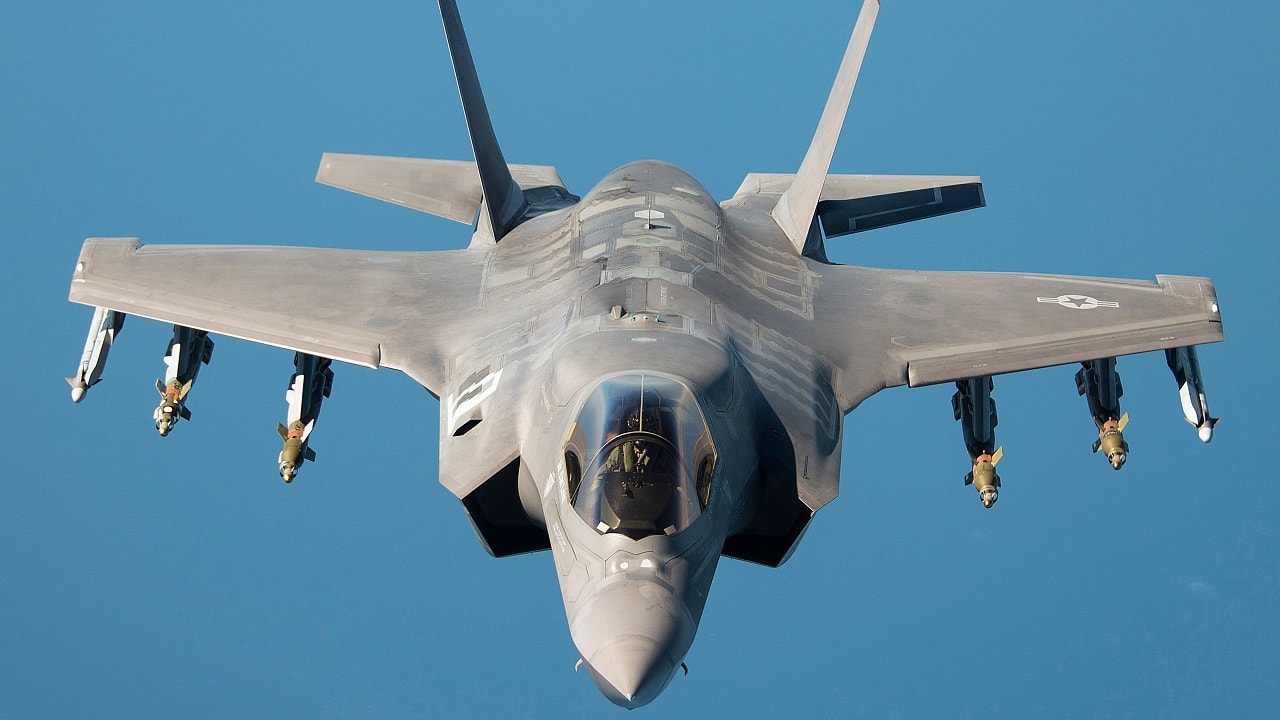The U.S. Air Force’s Lockheed Martin F-35 Lightning II is reportedly the aircraft that worries China the most, passing the older F-22 Raptor that is also made by the defense and aerospace giant.
According to a newly published study in the Chinese-language journal Modern Defense Technology, the U.S. fifth-generation stealth fighters both pose a significant threat to Chinese defenses at all stages of a combat operation, the South China Morning Post reported on Thursday.
The study’s researchers analyzed threat levels of U.S. military aircraft in different stages of a penetrating counter-air operation at a range of distances from China’s coastline. The study determined that the F-35A was likely to be the most versatile and capable aircraft during any conflict in China’s home waters.
The rankings could affect how Beijing develops its own technologies and tactics. The researchers further recommended a combination of “soft and hard kill” capabilities to ward off incursions into Chinese territory.
The good news for Beijing is that the Air Force won’t reach its F-35A acquisition goals in 2023.
Fewer F-35s Coming Soon
Last week, it was reported that Lockheed Martin would not be able to deliver as many F-35s as it had planned, due to delays involving Technology Refresh 3 upgrades. In addition, a three-month pause in engine deliveries last year slowed the program. However, the aerospace firm now expects the U.S. government to sign an F-35 Performance Based Logistics contract by the end of the year.
“We do expect a fraction of total expected 2023 deliveries to be impacted later this year, due to both software maturation related to Technology Refresh 3 (TR-3) and hardware delivery timing,” Lockheed Martin Chief Executive Officer Jim Taiclet told financial reporters on Tuesday during the first-quarter earnings call.
The goal for 2023 deliveries was 156 aircraft. It is not clear how many aircraft the company will fall short. Deliveries of the F-35 engines resumed in late February.
Start Your Engines?
In December, the U.S. military and Pratt & Whitney suspended deliveries of new engines following an F-35 mishap that month on a runway at a Lockheed Martin facility.
It was just last month that the Pentagon announced it would abandon its efforts to develop a next-generation adaptive engine for the F-35 Joint Strike Fighter. It instead opted to stick with and upgrade the F135 engine.
Tech Refresh 3 for F-35
In addition to working out the engine issues, this year’s delays are partly to blame on delivery of the TR-3 upgrades. Currently in flight testing, this upgrade includes new computers, processors, and software that provide the basis of the F-35’s Block 4.
According to the Air Force, the upgrade will add new sensor suites, more long-range precision weapons, improved electronic warfare features, more powerful data fusion, and increased cross-platform interoperability. These capabilities were developed to provide the F-35 pilot with a combat edge to identify, track, engage, and survive against advanced air, ground, and cyber threats. TR-3 significantly updates core processing power and memory capacity, which will allow the F-35 to run advanced software packed with state-of-the-art warfighting capabilities.
“We’re in the … very late innings of fully implementing (TR-3),” Taiclet explained, and noted that the upgrade “gives us much greater capability to really make the F-35 a true ‘edge compute’ node, and an open architecture ‘Internet of Things’ construct system.”
The aircraft’s edge-computing node in a 5G system will include onboard data storage, onboard data processing, and multi-pass ability to get data back to the cloud.
“There have been some delays in some of the hardware and software,” Taiclet continued. “But we’re really in the very late innings of getting this all together. We’re literally in flight test right now. And we will…wrap all that up by October or December.”
Though the Air Force may receive fewer F-35s this year, the upgraded Lightning IIs will show why Beijing sees the aircraft as such a serious threat — and why nations around the world continue to adopt the fifth-generation warbird.
Author Experience and Expertise
A Senior Editor for 19FortyFive, Peter Suciu is a Michigan-based writer. He has contributed to more than four dozen magazines, newspapers, and websites with over 3,200 published pieces over a twenty-year career in journalism. He regularly writes about military hardware, firearms history, cybersecurity, politics, and international affairs. Peter is also a Contributing Writer for Forbes and Clearance Jobs. You can follow him on Twitter: @PeterSuciu.

